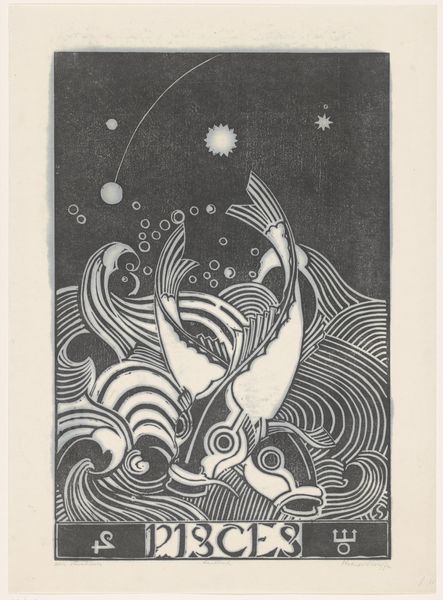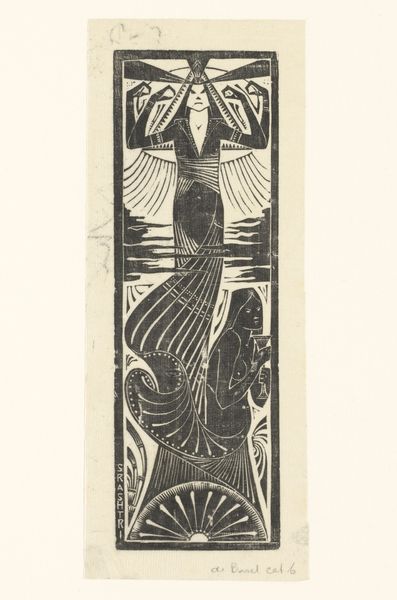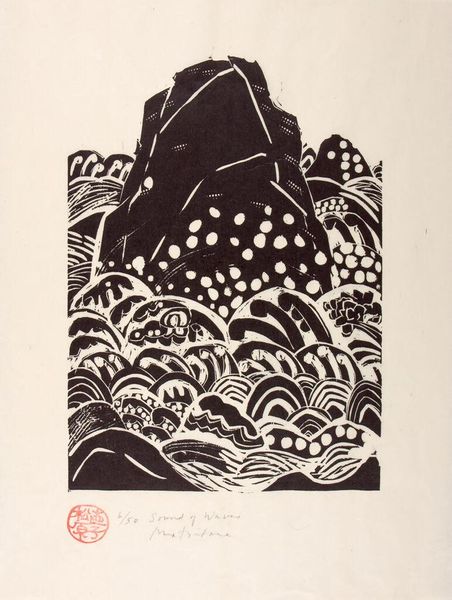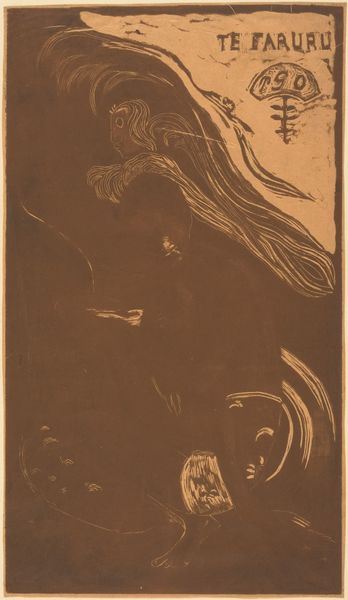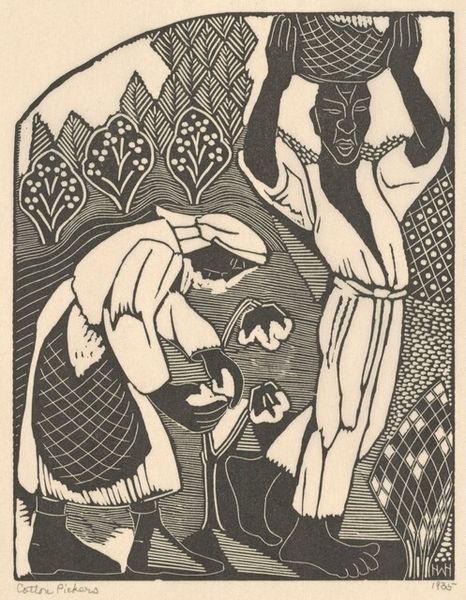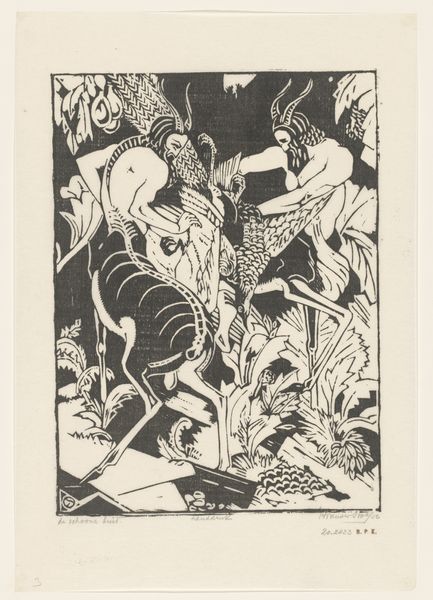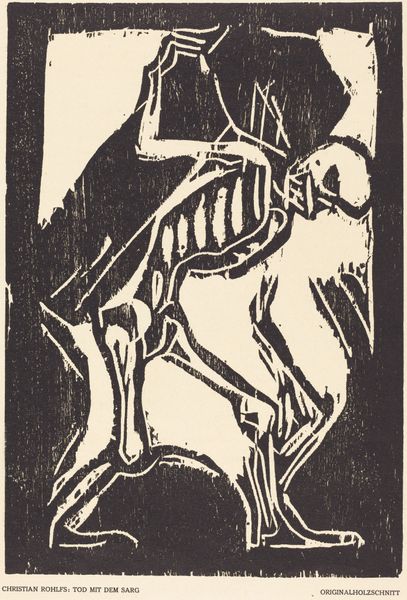
graphic-art, print, linocut
#
graphic-art
#
art-nouveau
#
linocut
# print
#
linocut
#
caricature
#
caricature
#
figuration
Dimensions: 20 11/16 x 13 13/16 in. (52.55 x 35.08 cm) (image)
Copyright: Public Domain
Curator: So dramatically composed! Immediately, I feel overwhelmed, tilted... Editor: Indeed. What you're experiencing echoes what Henri-Gustave Jossot may have wanted to evoke when creating "La vague (The Wave)" in 1894. It's currently held in the collection of the Minneapolis Institute of Art. What stands out most for me is how Jossot harnesses a linocut's potential for stark, contrasting forms. Curator: Those high contrast curves are pretty intense, the water seems so menacing. There’s this visual paradox - even in a single tone, I can clearly imagine the foam and the turbulence. Water, symbolically, is this untamed power; it seems to turn everything upside down, challenging control, literally capsizing our expectations. Editor: Precisely, it’s a very potent symbolic drama he distills from relatively few shapes and the printmaking medium itself. It relies heavily on the interaction between positive and negative space to guide the eye, even down to the almost abstracted details etched into the figures. Look closely and you'll find, at the end of the legs, very interesting "symbols." Do you feel it adds another dimension? Curator: It certainly deepens the narrative, perhaps revealing the absurdity of it all? We cling to symbols and rituals even as the world, or rather the sea, throws us about! There is a caricatural dimension, but not as cruel humor; rather it is to accept life’s absurd, almost tragic game, without despair. Editor: It is also really quite fascinating the choice Jossot took for a limited palette – almost like sepia, to render such an active moment. I suspect it intensifies the connection to historical prints that engage with dramatic events. The material choice seems very self-aware, drawing our attention not just to the represented scene, but to printmaking traditions of disseminating information and reflecting on major themes. Curator: A beautiful, terrible balancing act he achieves here between the chaos and the calm, the symbol and the sea, the known and the unknown, leaving a long shadow that washes through centuries. Editor: Agreed. This piece, through its elegant construction, has definitely encouraged me to consider the deeper and the ever-evolving relation between our internal compass and external chaos.
Comments
minneapolisinstituteofart almost 2 years ago
⋮
This lithograph offers a taste of the caricatures Henri Jossot drew by the hundreds. Here he ridiculed the Japonisme craze that swept through the Parisian art world: Hokusai's "Great Wave" upends a dandified artist who headed out to sketch a seascape, easel and canvas in hand. In direct parody of Japanese woodcuts, Jossot cut off the figure at the edge of the picture plane. In the lower left corner is the Alexandre Charpentier-designed blind stamp, a mark of connoisseurship identifying L'Estampe originale prints.
Join the conversation
Join millions of artists and users on Artera today and experience the ultimate creative platform.

